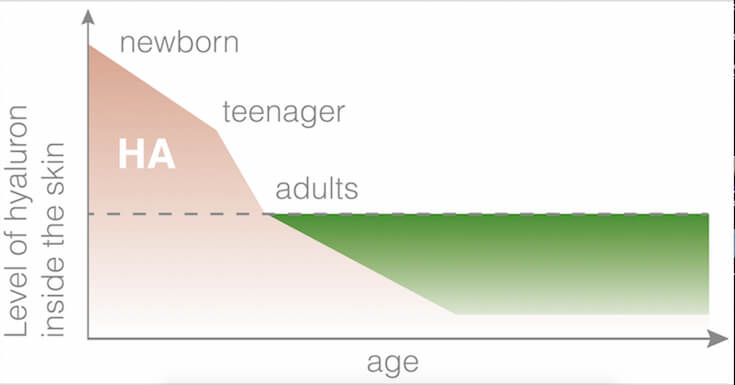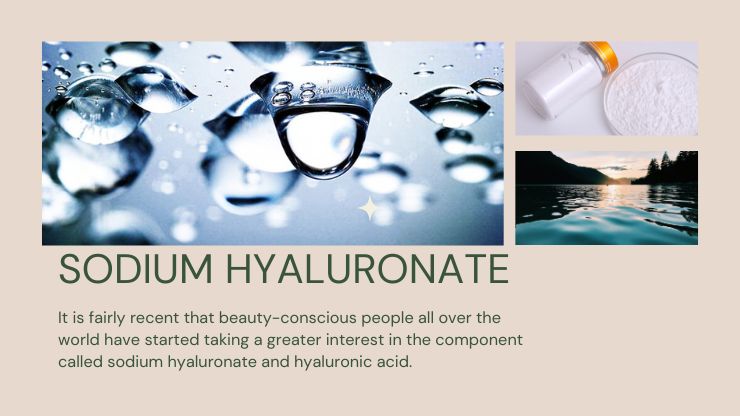Recently, beauty-conscious people all over the world have started taking a greater interest in the components called sodium hyaluronate and hyaluronic acid. Of course, there are differences, but the underlying principle behind both is ‘hydration’. Therefore, it isn’t surprising that sodium hyaluronate is chosen by most beauticians, cosmetologists, manufacturers and retailers of makeup products, and many more who deal with anti-aging items. After all, its ability to penetrate through the skin layers and provide the necessary dose of moisture makes it a hot favorite.
What’s the basic science?
The simple fact is that the sodium salt of the most popular hyaluronic acid is sodium hyaluronate. This component is much smaller than its acid counterparty, which makes its entry easy inside the surface of the skin. Naturally, the amount of water that can be held is far greater and is no less than 1000 times its own weight.
When applied to the skin via topical creams and lotions, the product rich in sodium hyaluronate travels down the dermis and maintains the water level. Thereby, the microcirculation process of the blood is also proper and so is the overall metabolism. The hydrating properties of the component help in softer-looking skin and a much fuller appearance of the face, to be precise.
As a result, most doctors prefer using sodium hyaluronate as injections and fillers to bring back the lost glow, and facial volume and keep wrinkles at bay. If that’s not enough, the medical side extends beyond the skin. Arthritis patients are administered injections of this component to help deal with tremendous pain in the knee, as pain and inflammation are reduced markedly.
What does it look like?
Although the real look of sodium hyaluronate is unknown to many, we have seen and applied it in the form of skincare and makeup products. But before it’s added to the formulas, the component is made into a solution form that chiefly contains water.
Why the use of sodium hyaluronate in skin products?
Since sodium hyaluronate can go deep within the lower layers of the skin, water is better retained. This helps to absorb the nutrients better.
Most youngsters do not face the problem of pigmented or sagging skin. The youthfulness is retained because of the higher content of sodium hyaluronate. Now as aging begins; the decreasing levels of this component cause significant skin sagging. Manufacturers and sellers have realized how facial creams, moisturizers, lotions, eye creams, sunscreens, and even makeup items have a higher content of sodium hyaluronate and the sale factor hence increases manifold.

How does it work?
As stressed, the skin absorbs water better when treated with sodium hyaluronate. Added to that is its ability to reduce any form of ‘trans-epidermal water loss. The moment a cream containing the same is applied, the dermis is changed into something like a super sponge. The water content is well maintained in the extracellular matrix and that helps in increasing both the density and volume. On the other hand, the intercellular matrix is stabilized, but in a temporary way.
Where lies the ease of use?
The beauty industry is not aware of the differences between hyaluronic acid and sodium hyaluronate. Yet, the latter is often chosen for its small molecular size and greater penetration capacity. The basic type is so modified in the labs that the molecular weight is much lesser to allow higher bioavailability.
How effective is sodium hyaluronate?
As the aging process begins, the skincare regime must be modified accordingly. Adding sodium hyaluronate to one’s basic skincare and maintenance will provide a natural moisturizing effect. This can happen since the component draws water and retains the same. Hydration is important for all ages, but with time, it becomes mandatory. This is not only to impart a glow to the skin but to make it healthier by several notches.
The market is currently flooded with a host of anti-aging skincare products, replete with sodium hyaluronate. Common among them are eye serums, gels, facial creams, purifying exfoliators, facelifts, lifting moisture creams, cell renewal creams, and many more. But don’t get spoilt for choice. Assess your needs and then make the purchase accordingly.








